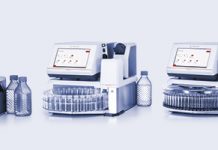By Dr Carol Treasure, Founder and CEO, XCellR8
How are NAMs being adopted by regulators?
Advances in animal-free science continue to outpace regulatory change, but the use of New Approach Methodologies (NAMs) – in vitro methods (such as cell-based tests and reconstructed human tissues) and in silico approaches (computer-based modelling) – is gaining ground. Regulators, including the European Chemicals Agency (ECHA) and the US Environmental Protection Agency (EPA), remain vocal in their support for NAMs. However, companies still report push-back when submitting non-animal data in regulatory dossiers, particularly in sectors like cosmetics, where animal testing bans are expanding globally.
Consultation with industry has led to extended deadlines and simplified fee structures when registering chemicals under UK REACH, especially for SMEs. The Health and Safety Executive (HSE) has also prioritised substances for regulatory action, aiming to balance cost and compliance while maintaining human health and environmental protections. While progress is welcome, a lot of uncertainty remains across UK industry and more clarity is needed.
The EU continues to revise REACH and CLP, with a major REACH revision proposal expected by the end of 2025. The recent CLP amendment introduced new hazard classes in areas such as endocrine disruption.
The European Commission and UK Government are both developing roadmaps to phase out animal testing in chemical safety assessments, with a focus on advancing NAMs across all chemicals legislation.
Which NAMs are now standard for regulatory compliance?
For many local endpoints, in vitro OECD Test Guidelines are now the default for compliance with regulations such as EU REACH and CLP, with animal testing only permitted as a last resort. Examples include skin irritation (TG439), corrosion (TG431), and eye irritation (TG492), with the updated TG492B providing a more comprehensive replacement for the Draize rabbit test. These methods have undergone extensive international validation, earning high confidence in predicting human safety. In most regulatory contexts, these tests are now considered first-tier and often sufficient as stand-alone evidence.
What alternatives exist for endpoints without validated NAMs?
The situation becomes more complex for systemic endpoints, such as developmental and reproductive toxicology (DART) and chronic/repeat-dose scenarios.
Human-relevant predictions of DART are particularly complex, as they involve a large number of systemic pathways and endpoints. Safety assessments therefore need to incorporate a variety of in silico and in vitro measurements to build a comprehensive safety profile. A Next Generation Risk Assessment (NGRA) approach, including a workflow from initial in silico assessment to supplementation with relevant in vitro assays, has recently been published. The proof-of-concept study demonstrated that protective safety decisions can be made for DART without the need to generate new animal test data.
Can NAMs replace the LD50 test for acute toxicity?
The nearly century-old LD50 tests are widely discredited, but in vitro and in silico alternatives are now available. XCellR8’s AcutoX assay, for example, uses human cells and liver metabolism to predict acute oral toxicity, achieving high accuracy for EPA and GHS hazard categories. The assay is already in use, often combined with in silico tools like CATMoS/OPERA. A recent study examined the use of AcutoX for surfactants, which are often misclassified in standard in vitro assays due to membrane disruption. By refining prediction models, AcutoX achieved 100% precision for EPA hazard category 2 and 90.9% for category 3, offering a protective and human-relevant alternative to animal tests.
Final Thoughts
NAMs are transforming product safety assessment, with regulators and industry increasingly aligning on their use. While challenges remain – particularly for complex endpoints like DART – the pace of innovation and regulatory adaptation is accelerating. For companies, the message is clear: NAMs are not just the future. They are the present, for the most advanced protection of human health.
Contact XCellR8 at info@x-cellr8.com;
+44 (0)1925 607 134; www.x-cellr8.com.










